As winter approaches, it’s easy to feel discouraged and let your cycling training take a back seat. However, with the right approach, you can turn the chilly season into an opportunity for growth and improvement. This comprehensive guide will show you how to make the most of your winter training for cyclists, from adapting your training plan to staying motivated and accountable. Let’s embark on a journey towards a successful cycling season!
Key Takeaways
- Winter training is essential for any committed cyclist to reach their goals and maintain fitness during the off-season.
- Adapt your plan with indoor cycling, outdoor winter riding & cross-training activities for an effective approach.
- Set specific goals, stay motivated & prepare now for peak performance at spring/summer events!
The Importance of Winter Training for Cyclists
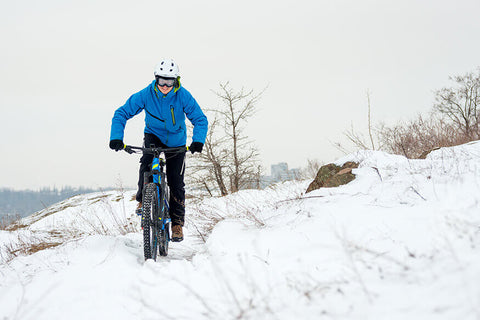
Winter training forms a significant part of any committed cyclist’s routine. It’s the perfect time to maintain and improve your fitness, prepare for upcoming events, and stay motivated during the off-season. A well-planned winter cycling training plan can be a great way to challenge yourself and develop your cycling skills, even with the potential risks of slippery roads or dark winter nights.
Defining your goals and managing your training load during the off-season will help you reach them. Recognizing your strengths and weaknesses provides insight into areas for improvement, which can help you reach your goals, indoors or outdoors.
Adapting Your Training Plan for Winter
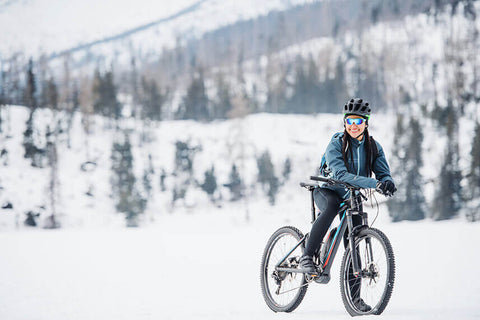
For success during the colder months, it becomes necessary to modify your cycling training plan to encompass indoor cycling, outdoor winter riding, and cross-training activities.
This well-rounded approach to structured training will allow you to continue making progress while staying safe and engaged in your training.
Indoor Cycling Solutions
Indoor cycling offers all the amazing benefits of real-road cycling, without the stress of dragging your bike out of the garage. With the help of smart bikes, indoor trainers, and cycling apps, you can keep up with your regular winter training schedule, without worrying about traffic, weather, or cold fingers that make it hard to grip your handlebars. Be sure to use a phone charging case and bike phone mount when using your cycling apps, this will allow you to mount your phone to your handlebars and wirelessly charge it, so you can finish your workout with a fully charged phone.
Integrating activities unrelated to cycling, like weight training, core work, and flexibility exercises, can enhance your overall cycling performance and avert injuries during winter training. Wearing comfortable gear while training indoors is also crucial for a long-duration workout, as your body will thank you afterward.
Outdoor Winter Riding Tips
Outdoor winter riding comes with its challenges, such as slippery roads or freezing temperatures. However, with a few simple adjustments, you can safely and effectively train outdoors throughout the season. Layering is key to staying warm and motivated during winter rides, so make sure to wear leg warmers, arm warmers, vests, thin scarves, and shoe covers. Remember, you should be a little chilly when you start out on your ride to ensure that you stay comfortable throughout.
Especially during winter, planning your training rides becomes particularly vital. Here are some tips to help you plan your rides effectively:
- Be flexible and creative with your training plan, as you may need to shorten or reschedule rides, or move them indoors on a smart trainer.
- Keep in mind that intense workouts are best done indoors, while longer rides with little fluctuation and specificity can be done outdoors.
- Plan your workouts ahead of time and gradually warm up when it’s cold outside to avoid aggravating your asthmatic response.
Cross-Training Activities
Incorporating cross-training activities into your winter training plan is beneficial as it enhances cycling performance and mitigates the risk of injuries. By incorporating off-the-bike exercises such as strength training, core work, and flexibility exercises, you can improve overall cycling performance and prevent injuries.
Some exciting cross-training options include:
- Spin biking
- Cross-country skiing
- Snowshoeing
- Exercises like burpees, box jumps, and squat jumps
These activities not only provide an intense workout, but they also help improve cardiovascular fitness and strength, contributing to a well-rounded winter training experience.
Building Base Fitness During Winter

A robust aerobic base underpins a successful cycling season. Winter training should therefore concentrate on building this base through a blend of low-intensity and high-intensity workout sessions. Traditional thinking emphasizes the importance of winter base training. It suggests that you should aim for very long rides at a low intensity to maximize the benefit. However, reversed periodization offers a more efficient approach, allowing you to boost your base fitness with minimal time investment through high-intensity interval training (HIIT).
For time-crunched athletes, incorporating three interval sessions and one to two longer rides per week can help you stay on top of your game. This balance of low-intensity and high-intensity workouts will ensure you maintain and improve your base fitness throughout the winter months, preparing you for the challenges of the cycling season ahead.
Periodization and Planning for Success
Periodization is a systematic approach to structuring your training plan into distinct phases, each with specific goals and outcomes. Constructing a well-organized and periodized training plan that targets your goals, highlights events, and accommodates flexibility and adaptation is crucial for success. The three essential phases of cycling training are the Base, Build, and Speciality Phases, designed to help you reach your cycling goals.
Reverse periodization is an effective training approach for time-crunched athletes, involving shorter, focused periods of high-intensity training sessions followed by substantial recovery periods. By implementing an 8-week program of increasing intensity with intervals, followed by 4 weeks of low to moderate-intensity endurance riding, you can maximize your training potential and reach your goals faster. Following a three-week work block with a week of recovery can further enhance your training plan, especially for experienced riders.
Nutrition and Recovery Strategies

Right nutrition and recovery during winter training are key to optimizing performance and avoiding overtraining. Ensuring adequate carbohydrate, protein, and fat intake during and after rides can support energy levels and performance, while implementing effective recovery strategies such as rest and stretching can promote muscle repair and prevent injuries.
Fueling Your Rides
To fuel your winter training rides effectively, you’ll need to consume enough carbohydrates, protein, and fats to sustain your energy levels and maximize your performance. Whole grains, lean proteins, and healthy fats such as nuts, seeds, and avocados are all excellent sources to support your training. Planning ahead and having healthy snacks and meals on hand, as well as staying hydrated and drinking plenty of fluids, is crucial for ensuring adequate intake of these nutrients during rides.
Neglecting your nutrition during long cycling sessions can lead to the dreaded bonk, making your session less enjoyable and affecting your recovery. So, remember to fuel your body for optimal performance and avoid experiencing an energy crash during your winter training rides.
Post-Workout Recovery
Recovery after workouts is vital for promoting muscle repair and averting injuries. After your winter training rides, consuming a balanced meal with a mix of carbohydrates, proteins, and fats, as well as drinking plenty of fluids, can optimize your recovery.
In addition to proper nutrition, getting adequate sleep, taking breaks between workouts, and stretching after each workout are all crucial for maximizing your post-workout recovery. Other strategies for enhancing recovery include ice baths, foam rolling, and massage.
By implementing these effective recovery techniques, you’ll be better prepared for your next training session and reduce the risk of injuries during your winter training.
Fine-Tuning Your Indoor Training Environment
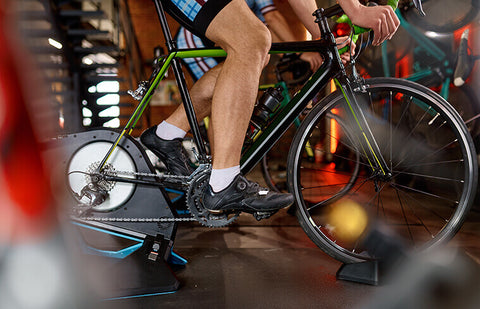
Creating a comfortable and efficient indoor training environment is key to improving your winter training experience. Invest in the right equipment, such as a smart bike, indoor trainer, or turbo trainer, to simulate the feel of riding outdoors. Cooling is one of the most challenging aspects of your indoor training setup, as you won’t benefit from the natural breeze of movement. Therefore, investing in a fan for proper airflow is crucial for maintaining your performance during intense indoor sessions.
To keep your indoor training engaging and enjoyable, set up your space with entertainment options such as music, movies, or video games. With a comfortable and accessible indoor training environment, you’ll be more inclined to stay focused and motivated throughout your winter training sessions.
Staying Motivated and Accountable
Maintaining motivation and accountability during winter training may be difficult, but they are crucial for achieving your goals and preserving your progress. Setting specific, measurable, and achievable goals can help you stay focused and inspired throughout the off-season. Additionally, surrounding yourself with a reliable support system of friends, family, and fellow cyclists can provide encouragement and accountability to keep you on track.
To further boost motivation and accountability, consider engaging training tools such as virtual cycling classes, online training programs, and fitness tracking apps. These tools can offer structure and feedback, helping you stay on track and reach your goals during the winter months.
Preparing for Spring and Summer Events
As the cycling season nears, it becomes necessary to progressively ramp up the intensity and specificity of your training to guarantee peak performance at your target events. A few weeks before your first event, begin ramping up the intensity of your winter cycling training plan to better prepare yourself.
In addition, exploring training camps in warmer climates can help you become accustomed to the heat and humidity of summer riding conditions, allowing you to make the most of your training.
Set inspiring goals for the season, such as aiming for specific events, striving for goal times, or challenging yourself to reach a certain number of miles you want to ride. By doing so, you’ll stay motivated and focused throughout the winter months, ensuring that you’re fully prepared for a successful cycling season.
Summary
In conclusion, winter training is a valuable opportunity to maintain and improve your cycling fitness, refine your skills, and prepare for the upcoming season. By adapting your training plan, focusing on building base fitness, and employing effective nutrition and recovery strategies, you can lay a strong foundation for success. Stay motivated, accountable, and prepared for spring and summer events by fine-tuning your indoor training environment and setting inspiring goals. With the right approach and dedication, you can transform the winter season into a powerful stepping stone towards your cycling goals.
Frequently Asked Questions
How do pro cyclists train in the winter?
Pro cyclists train in the winter by repeating five to six hours of low-intensity workouts for several months, also known as accruing base miles.
What do cyclists do in winter?
Winter cyclists should layer up with a long sleeve base layer, jacket and gilet, as well as winter accessories such as booties, a helmet and winter gloves. When riding in icy conditions, slow down on turns, use a bike with fenders, metal studded tires and LED lights, and adjust riding tactics to improve handling.
How do I prepare for winter cycling?
To prepare for winter cycling, make sure you have full-length bib tights, a thermal cycling hat, gloves, overshoes, a warm jersey, jacket or vest, socks, head gear, and cycling shoe covers. For your bike, mudguards, puncture resistant tires, lights, cleaning supplies, bags, and spare parts are essential. With the proper preparation, you can enjoy a safe and comfortable ride!
What are some benefits of winter cycling training?
Winter cycling training is essential to sustaining and enhancing your fitness and keeping you motivated during the off-season, so that you can get ready for upcoming events.
How can I adapt my training plan for winter?
Stay motivated during the winter months by including indoor cycling, outdoor winter riding and cross-training activities in your cycling training plan to ensure continued improvement and success.

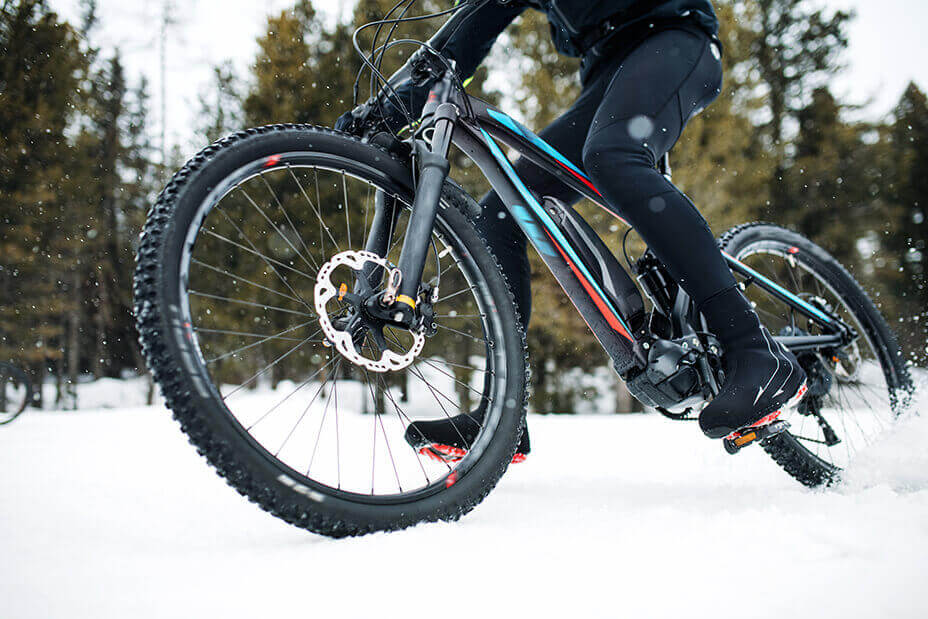
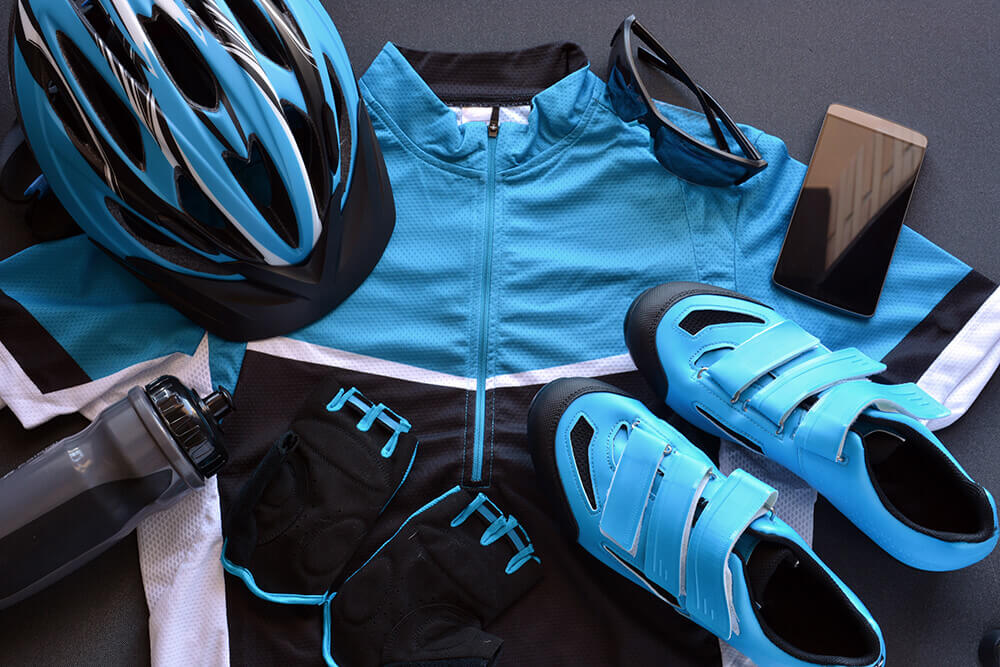

Leave a comment
This site is protected by hCaptcha and the hCaptcha Privacy Policy and Terms of Service apply.